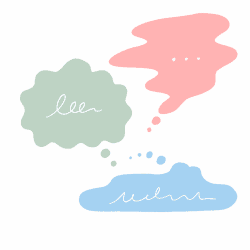How to be happy — one of life’s biggest quandaries, an inspiration goldmine for pseudo-professional self-help writers and a top Google search for those melancholic, glass-ofwine-gone-wrong-driven existential evenings.
The majority of post-World War Western ideology and the American-dream rhetoric circa 1950s centralizes the role of freedom in the neverending and inescapable race to self-actualization.
The 1776 United States Declaration of Independence boasts the settler colonists’ rights to “life, liberty and the pursuit of happiness.” Ultimately, with this line of thinking, freedom and happiness become the pinnacle of human existence that most of us will spend our lives chasing.
More often than not, the topic of happiness, and how to supposedly attain it, boils down to conversations about the rather rigid dichotomy between positivity and negativity. Most of us have heard about the power of positive thinking and the oppositional parasitic plague
posed by our pessimistic pals.
The health and well-being — or self-improvement — sections of our local bookstores are riddled with books whose cover pages boldly claim the ability to help readers radically alter their thoughts by shifting from a negative outlook to a positive one.
However, most of these books nurture a highly problematic perspective of stopping negative thoughts and replacing them with positive thinking patterns. This perspective ebbs and flows through dominant Canadian frameworks regarding thought management.
However, the problem is not found in a head clouded with an overwhelming fog of negative thoughts per se, but rather, in our overall reactions to thoughts that cause stressful or unpleasant emotions. It might seem like semantics, but this subtle linguistic distinction highlights the key difference, which lies in how we make sense of our thoughts and emotions.
A thought is just a string of words, phrases, clauses and perhaps an article or two that, overall, are neutral before we attach meaning to them. In every mind, there is a fraction of a second in which a thought exists without any inherent connection to the constructed categories of being either good or bad.
Under the neutrality of this blank-slate model, it is impossible to stop negative thinking, and therefore, the focus shifts to creating space for comfort in the discomfort. Many have tried to push down negative thoughts, forcing themselves to maintain a positive outlook, and many have failed.
Let’s face it. Sometimes life sucks, but life sucking is a normal part of existence. It is okay — and necessary — to feel the full spectrum of emotions, ranging from elated to downright devastated. The tricky part lies in cultivating emotionally intelligent self-awareness in order to recognize when an appropriate response to something crappy transforms into a year-long wallow walk
Andy Puddicombe, co- founder of the wildly popular meditation and mindfulness app Headspace, speaks about changing your perspective using an analogy of “sitting on the side of a busy road,” suggesting that the passing cars represent thoughts and feelings, and ultimately, that “all you have to do is … sit there and watch the cars.”
Puddicombe argues that, by training the mind, you can avoid passing immediate judgement on your thoughts and feelings, and through this new perspective, find a sense of natural calm.
On this so-called pursuit of happiness, we cannot ever rid ourselves of negative thoughts, but we can become more aware of them. Taking the time to sit with your discomfort and recognize the existence of unpleasant emotions can foster a sense of calm and fuel empathetic outlooks.
Noticing the existence of the thoughts and their split-second categorical placement — whether habitually good or habitually bad — can change the relationship you have with your thinking patterns.
Stopping negativity and enforcing positivity is not the crutch of happiness — taking the time to become more aware of ourselves and putting in an effort to live in the present moment can help us produce more emotionally intelligent responses to our thoughts, and ultimately, reduce split-second negativity.
—
Ashlynn Weisberg
Graphic: Jaymie Stachyruk / Graphics Editor